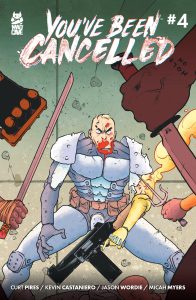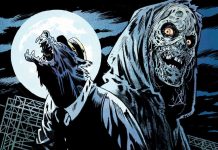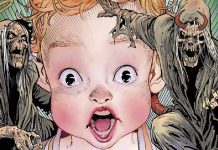This week’s main review is Kill More #1, out now from IDW Publishing. Plus, the Wednesday Comics Team has its usual rundown of the new #1s, finales and other notable issues from non-Big 2 publishers, all of which you can find below … enjoy!
 Kill More #1
Kill More #1
Written by Scott Bryan Wilson
Art by Max Alan Fuchs
Colors by Valentina Briški
Published by IDW Comics
Review By Ricardo Serrano Denis
There’s an apocalyptic quality to serial killers. If allowed to grow in numbers and unchallenged, who’s to stop them from going through entire populations, erasing humanity one town or city at a time. Scott Bryan Wilson and Max Alan Fuchs’ Kill More doesn’t directly entertain this idea, but it does allude to it in execution. It carves a special place in serial killer comics because of it.
Kill More is set in a rundown and nearly depleted city called Colonia, a human settlement on the planet Mars. The place looks like a decaying corpse, its inhabitants essentially becoming desperate insects trying to take whatever they can from it to survive. Two cops from Crimes Against Persons division, called Aaron Aira and Mwanawa Parker, are fighting a losing battle to stay ahead of these killers and the trail of missing persons left in their wake, but the police force is severely underfunded and understaffed. Whatever lies ahead is bleak, cruel, and inevitable.
Wilson and Fuchs have dug deep into their dark resource pool to come up with a nasty set of killers for this story. Lady Facesmasher, The Sufferer, The Obituary Machine, and Ethel (an old lady that loves to run people over with her car) are just some of the death-dealers that have contributed to the near extinction of people in the colony.
Wilson does a great job establishing just how badly Colonia has fallen to ruin, from the opening pages on. For a minute, I though the book was more about killers in a post-apocalyptic setting. It isn’t, and that’s important. The rundown state of the city and the tired look of the police officers in most every scene they’re in signals a systemic failure on all fronts. It helps build horror as to how dangerous it is to live there.
It’s interesting that the collapse of the police force isn’t framed as a commentary on the need to do away with the institution itself. Rather, it comes across as an examination of its necessity and function should it be run correctly. In essence, badly run law enforcement equals serial killer epidemics. Wilson navigates these tricky waters well and gives much needed food for thought.
Fuchs approaches character and worldbuilding as an exercise in reflections. Characters look like extensions of the city and vice versa. He makes sure the city’s decline doesn’t look like it happened in a vacuum. The people there allowed it to get to that point, and so their designs feel burdened with it.
The serial killer designs in particular are downright terrifying when they need to be and sad when it calls for it, but there’s a lot of nuance in them. They’re not all violent to the same degree nor do they all kill for the same reasons. Fuchs gives each one a personality unique to them that speaks volumes in terms to the amount of character development the art alone is capable of. Aspiring artists, take note. This is how you design complicated serial killers.
Valentina Briški’s colors bring out that sense of urban decay I mentioned earlier, sticking to blues and purples to give locations a bruised look. That’s not to say it doesn’t feel alive. Briški accentuates the blood and the gore enough to create a fascinating contrast with the purple-infused palette, giving the violence more intensity. The story’s more science fiction elements thrive under the color scheme, and it helps separate the story from traditional serial killer stories.
Kill More features backmatter material and it succeeds in fleshing out the story’s world. In fact, it includes information I thought would’ve served the story better had it been introduced in the comic itself. The fact Colonia is a Mars colony doesn’t entirely register on a first read and can get lost as a mere detail rather than a key aspect of its world. The sci-fi stuff isn’t explicitly presented either. As a consequence, one could easily confuse Colonia with just another American city stand-in. I hope these parts of the formula start coming together in future issues. The idea of serial killers in Mars is too great not to explore.
Kill More #1 is unlike any serial killer comic you’ve ever read. It has the potential to say a lot about the role of policing in cases of extreme violence and high murder rates. Fuchs’ art is a highlight and it truly adds to the comic’s unique identity. The blood spilled on its pages looks fresh and it lingers long after you’re done with it. Hell, you might even get that coppery taste in your mouth that comes with it. Like a good bloodstain, it’s a tough one scrub off.
Verdict: BUY
Wednesday Comics Reviews
Creepshow Vol. 2 #1 (Image Comics – Skybound): The first story in this new Creepshow series is a gnarly, dark comedy stunner of a horror piece, and the book just goes from there, with the second story capably picking up the torch. In the first piece, writer Garth Ennis and artist Becky Cloonan — with colors by Lee Loughridge and letters by Pat Brosseau — do truly awful and fighting things to a guy who has strong takes about abortion rights. It’s so damn good; one of my favorite short comics of the year. In the second story, writer/penciller Phil Hester, inker Eric Gapstur, colorist Mike Spicer, and again letterer Brosseua, deliver a concept about a grieving son who will do anything to see his mother again, and the things he does — of course — deliver up some fantastic horror comics storytelling. I loved the first volume of Creepshow, and I’m happy to report it hasn’t lost a step at all with this return. —Zack Quaintance
Darkwing Duck Negaduck #1 (Dynamite): Darkwing Duck is one of those childhood characters that I always had an affinity for. How could you not, he’s such a sharply dressed duck. In classic fashion, Darkwing Duck Negaduck #1 finds Darkwing’s opposite, Negaduck, fresh off of a prison break and back in town to destroy everything with the ultimate evil master plan. Except, this time, he runs into other villains who are already executing his exact plans! Written by Jeff Parker, drawn and colored by Ciro Cangialosi, and lettered by Jeff Eckleberry, Negaduck flies through town, seeking chaos, and he looks great doing it. I don’t read many all ages comics these days, even for review, but I will say – this one is fun. It flows from one scene to the next with solid page turns and I can see it being a good primer for new young fans of Darkwing Duck’s greatest villain – Negaduck! —Michael Kurt
From the World of Minor Threats – The Alternatives (Dark Horse Comics): With oneliners like “I have a fucking DATE!” and a well-developed cast of kooks meandering about, this opening pitch splats the page with so many different directions before it finds a plot. From a writers room of Patton Oswalt, Jordan Blum, and Tim Seeley, the dna comes across as Seeley-heavy for those familiar with Hack/Slash, which certainly helps when it concerns a shapeshifting goth girl going to AA meetings for traumatized superheroes. Artist Christopher Mitten brings a raw tooth nib to inks that allows the simple layouts to coast entirely off of vibe and character acting. Expressions be damned where Mitten is concerned, but ask him to draw a hand picking something up, and there’s suddenly nuance to the performance. Mitten splits screen time with Tess Fowler for some Fables-lite dream sequence pick-ups that are so well manicured, they pull me out of the immersion, but exciting to see when/where they pop up next. Another facet pulling attention to itself is letterer Nate Piekos’ work on captions where character personalized boxes absolutely dictate page reading flow. This technique fares better than the jam-packed dialogue balloons that bloat under higher word counts and inconsistently eat the panel border it bumps into. Good news however as colorist Ian Herring matches Mitten’s grit with simple cool grey shadows and nostalgic color moods that hint at a deeper range in the coming issues. Exciting! All in all, The Alternates throws a lot around before it finds a purpose, but it’s never incoherent, and the 90s Vertigo vibes are present in full! —Beau Q.
Saint John #1 (Dark Horse Comics): The mystery of what drives the masked man of Portland to do the things he does becomes clear in the first issue of Saint John. Written by Dan Schkade and Brennan Wagner, with art also from Schkade, Saint John does everything it can to show what it is the citizens of Portland mean when they say to keep the city weird. Throughout the issue, the city feels alive and vital to every page of the comic, much to the work of Schkade’s art and colors from Wagner. The first page is enough to leave any visitor awestruck at just what happens in the City of Roses. Letters from Frank Cvetkovic accompany the constantly dreary Portland weather to add the finishing touches on the noir atmosphere, providing stylized and hard-boiled captions that help capture the mood the writers set out to showcase. If this first issue is any indicator, it is a labor of love to an obviously special place and its people that help make it so. One highlighted effectively in the comics medium for how well the story and art work together. —Bryan Reheil
Star Trek – Picard’s Academy #1 (IDW Publishing): It’s back to San Francisco in this first issue by Sam Maggs, Ornella Greco, Charlie Kirchoff, and Jeff Eckleberry, which returns to Picard’s Academy days. As fans of TNG and Picard will remember, the younger Jean-Luc was not quite the diplomatic paragon he became in his later years. This issue features engaging art, cartoon-y but distinct from the style of any of the Trek cartoons. It also manages some fantastic cameo appearances and allusions, like the Stellar Cartography professor and the groundskeeper Mr. Boothby (non-Species 8472 edition). While much of the supporting cast will have to wait for future issues for further development, Betazoid frenemy Reshan Dar is an immediately engaging foil for Picard. Plus, including elements of the Romulan-human conflict as part of the Academy curriculum brings in one of the most interesting canonical conflicts. While Picard is a familiar character, this is an unexplored period of his life with lots of storytelling potential. This is an excellent opening issue that brings the potential for a very solid series (and perhaps eventual appearances by Uhura, Picard’s first commanding captain). Be sure and consider this one required reading for the fall semester! — Avery Kaplan
You’ve Been Cancelled #4 (Mad Cave Studios): You’ve Been Canceled #4 is the violent and satisfying conclusion to the series, questioning the moral high ground of people that kill for sport, for entertainment, in a society that has commodified righteous outrage. In doing so, writer Curt Pires makes it explicitly clear that Roland Endo, the protagonist, was never a hero and I think that’s a narrative point that really makes it work and makes the final sequence all the more satisfying. The cast makes their way to the Cancelled HQ, they have their intentions set on shutting it down entirely, each with their own desires for revenge. As Roland fights through the HQ, artist Kevin Castaniero gets to play in the biggest action sequences that the series has to offer and the visceral carnage is kicked up by colorist Jason Wordie. Wordie’s use of saturation makes the action pop and the blood on page even more so. All of this is tied together by letterer Micah Myers who creates emphasis and volume across the story, and there’s a really neat thing done in the lettering to identify pieces of tech that I think is really fun. You’ve Been Canceled works as a critique of capitalist exploitation and of the culture we live in, exploring the lines between justice and theater and is well worth your time. –Khalid Johnson
Read more entries in the Wednesday Comics reviews series!


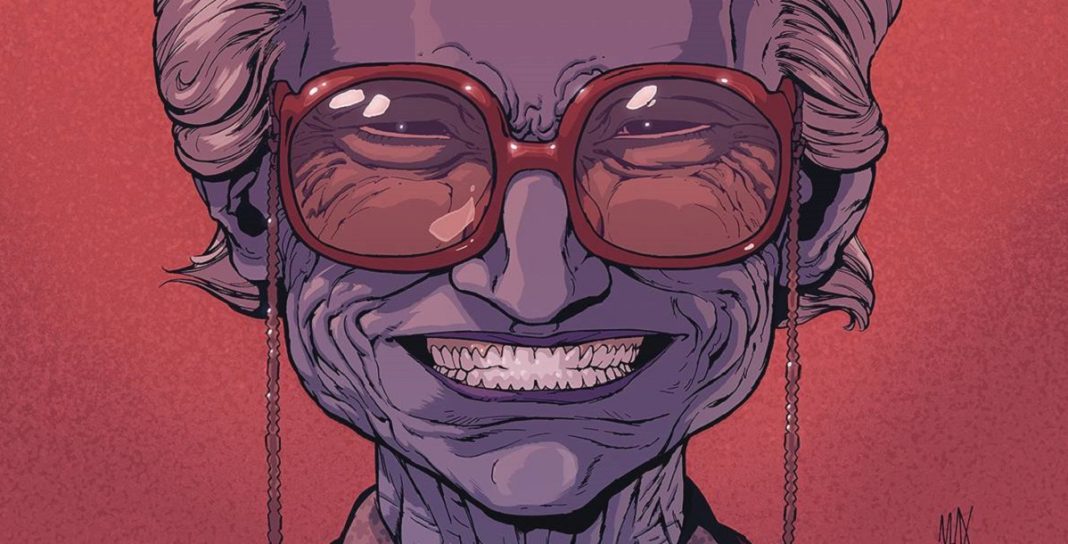
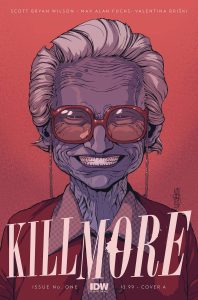
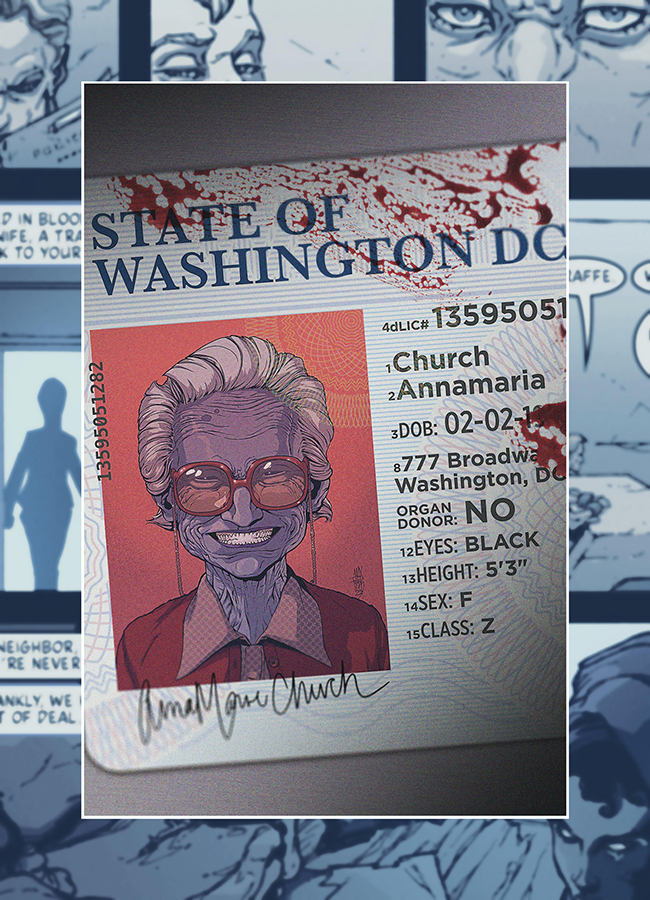
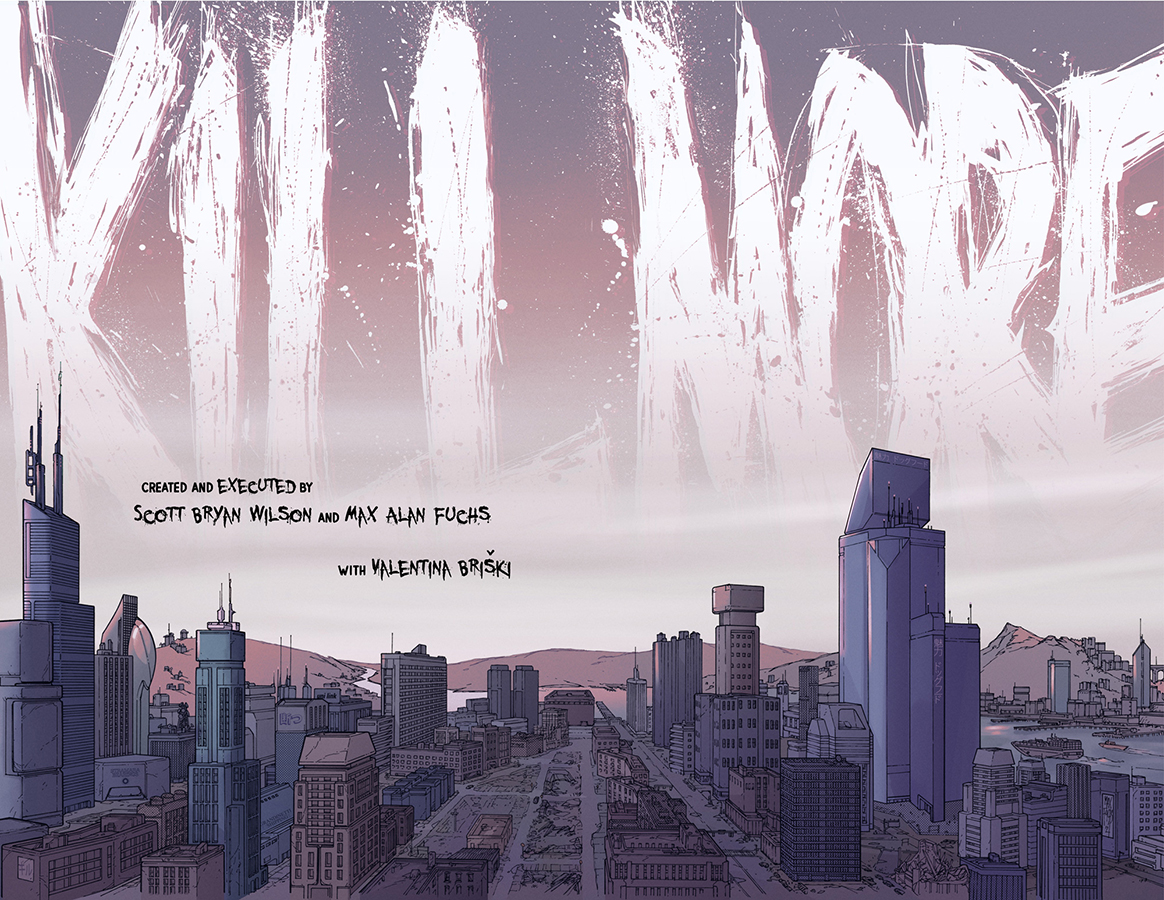
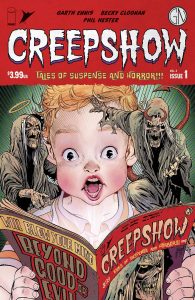
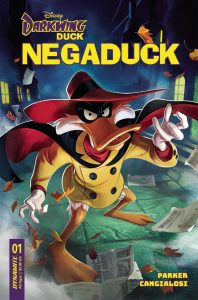
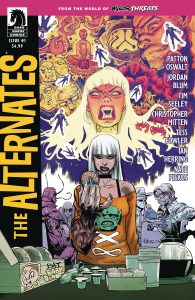
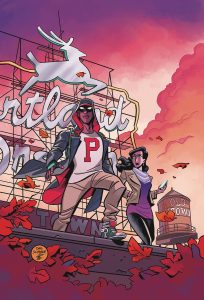
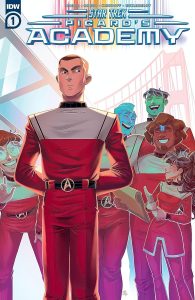 Star Trek – Picard’s Academy #1 (IDW Publishing): It’s back to San Francisco in this first issue by Sam Maggs, Ornella Greco, Charlie Kirchoff, and Jeff Eckleberry, which returns to Picard’s Academy days. As fans of TNG and Picard will remember, the younger Jean-Luc was not quite the diplomatic paragon he became in his later years. This issue features engaging art, cartoon-y but distinct from the style of any of the Trek cartoons. It also manages some fantastic cameo appearances and allusions, like the Stellar Cartography professor and the groundskeeper Mr. Boothby (non-Species 8472 edition). While much of the supporting cast will have to wait for future issues for further development, Betazoid frenemy Reshan Dar is an immediately engaging foil for Picard. Plus, including elements of the Romulan-human conflict as part of the Academy curriculum brings in one of the most interesting canonical conflicts. While Picard is a familiar character, this is an unexplored period of his life with lots of storytelling potential. This is an excellent opening issue that brings the potential for a very solid series (and perhaps eventual appearances by Uhura, Picard’s first commanding captain). Be sure and consider this one required reading for the fall semester! — Avery Kaplan
Star Trek – Picard’s Academy #1 (IDW Publishing): It’s back to San Francisco in this first issue by Sam Maggs, Ornella Greco, Charlie Kirchoff, and Jeff Eckleberry, which returns to Picard’s Academy days. As fans of TNG and Picard will remember, the younger Jean-Luc was not quite the diplomatic paragon he became in his later years. This issue features engaging art, cartoon-y but distinct from the style of any of the Trek cartoons. It also manages some fantastic cameo appearances and allusions, like the Stellar Cartography professor and the groundskeeper Mr. Boothby (non-Species 8472 edition). While much of the supporting cast will have to wait for future issues for further development, Betazoid frenemy Reshan Dar is an immediately engaging foil for Picard. Plus, including elements of the Romulan-human conflict as part of the Academy curriculum brings in one of the most interesting canonical conflicts. While Picard is a familiar character, this is an unexplored period of his life with lots of storytelling potential. This is an excellent opening issue that brings the potential for a very solid series (and perhaps eventual appearances by Uhura, Picard’s first commanding captain). Be sure and consider this one required reading for the fall semester! — Avery Kaplan